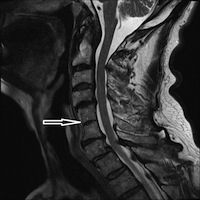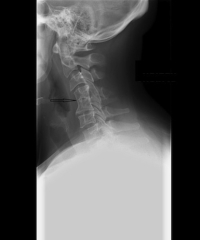An Overview of Klippel Feil Syndrome
Klippel Feil Syndrome stems from the time of human development in the uterus. In embryological terms, humans start to form the spine through structures called somites. These somites develop soon after inception and start forming the vertebra by separating at about 3-8 weeks of development. Klippel Feil Syndrome is a failure of segmentation of one or more of these somites in the neck. In other words, the segments don’t separate. This causes, in effect a “fusion” of the two cervical vertebral segments.
The reason this developmental error is called Klippel Feil Syndrome is due to the observation of Maurice Klippel and Andre Feil. These physicians independently described this condition in 1912.
Klippel Feil Syndrome is normally found as an incidental finding. This means that this congenital fusion normally causes no symptoms by itself. There might be preexisting decreased range of motion of the neck, but most people with this condition would not notice this decreased motion.
Are you suffering from symptoms of Klippel Feil Syndrome?
Would you like to consult with Dr. Corenman about your condition?
You can set up a long distance consultation to discuss your
current X-rays and/or MRIs for a clinical case review.
(Please keep reading below for more information on this condition.)
The main problem with Klippel Feil Syndrome is that normal degenerative changes occur around the fusion and eventually, symptoms occur from these degenerative changes. These are the typical complaints that most individuals have who do not have Klippel Feil Syndrome suffer from; neck pain, stiffness, shoulder and arm pain and nerve compression symptoms.
There is a small subset of patients who have other congenital anomalies associated with Klippel Feil Syndrome. These include renal abnormalities (kidney), Sprengel’s deformity (the scapula or shoulder blade sits high on the upper back), and other more rare conditions. In younger individuals, an ultrasound of the kidneys may be indicated.
For additional resources on Klippel Feil Syndrome, please contact the office ofDr. Donald Corenman, spine specialist and neck doctor.
Related Content
- Chronic Radiculopathy
- Cervical Degenerative Disc Disease
- Cervical Degenerative Facet Disease
- Cervical Spine Instability
- Cervical Spine Fractures and Dislocations
- Failed Artificial Cervical Disc Replacement
- Failed Neck Surgery Syndrome
- Progressive Slip of Cervical Vertebra after a Posterior Laminectomy Surgery (Iatrogenic Instability)
- Isolated Disc Resorption (IDR)


